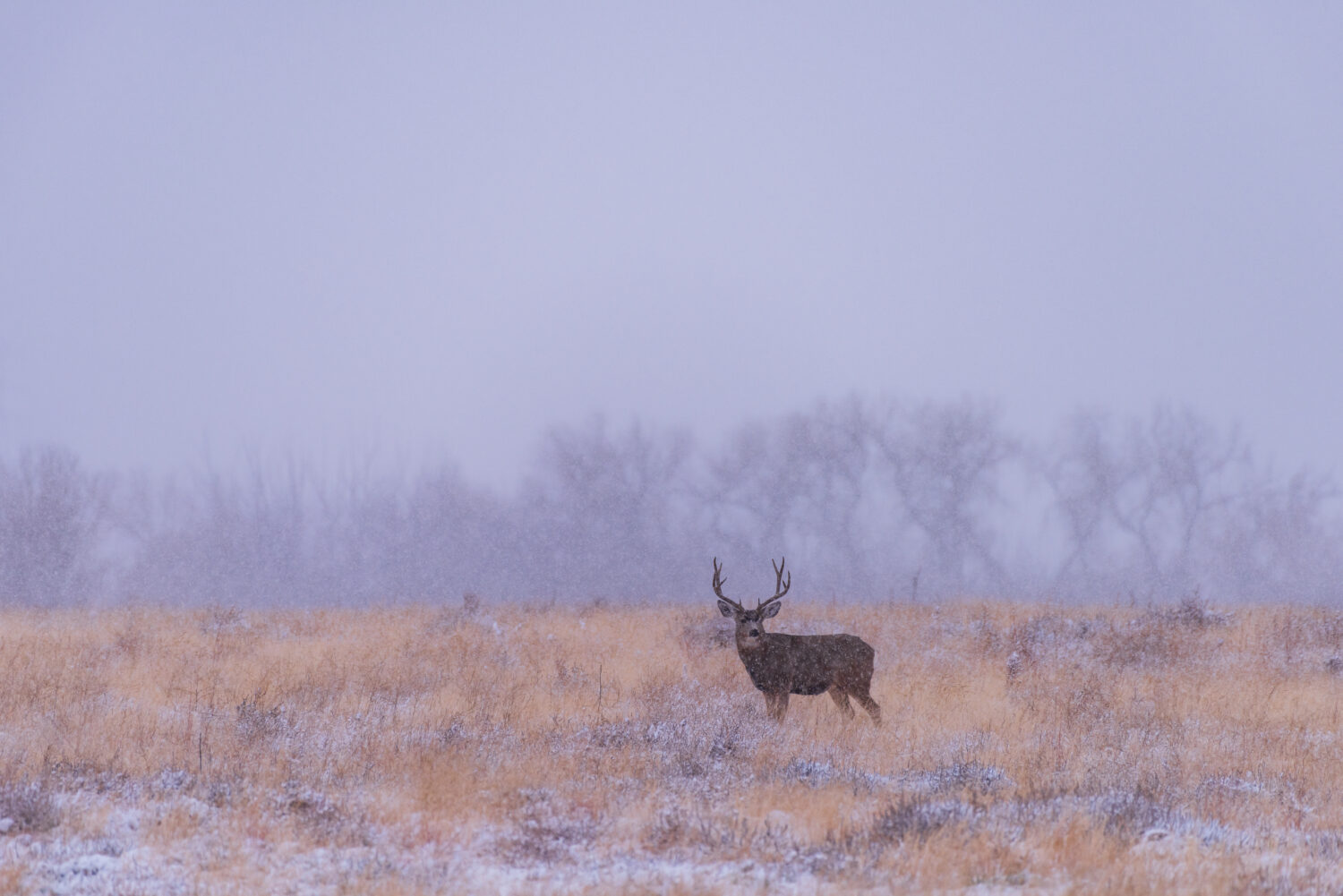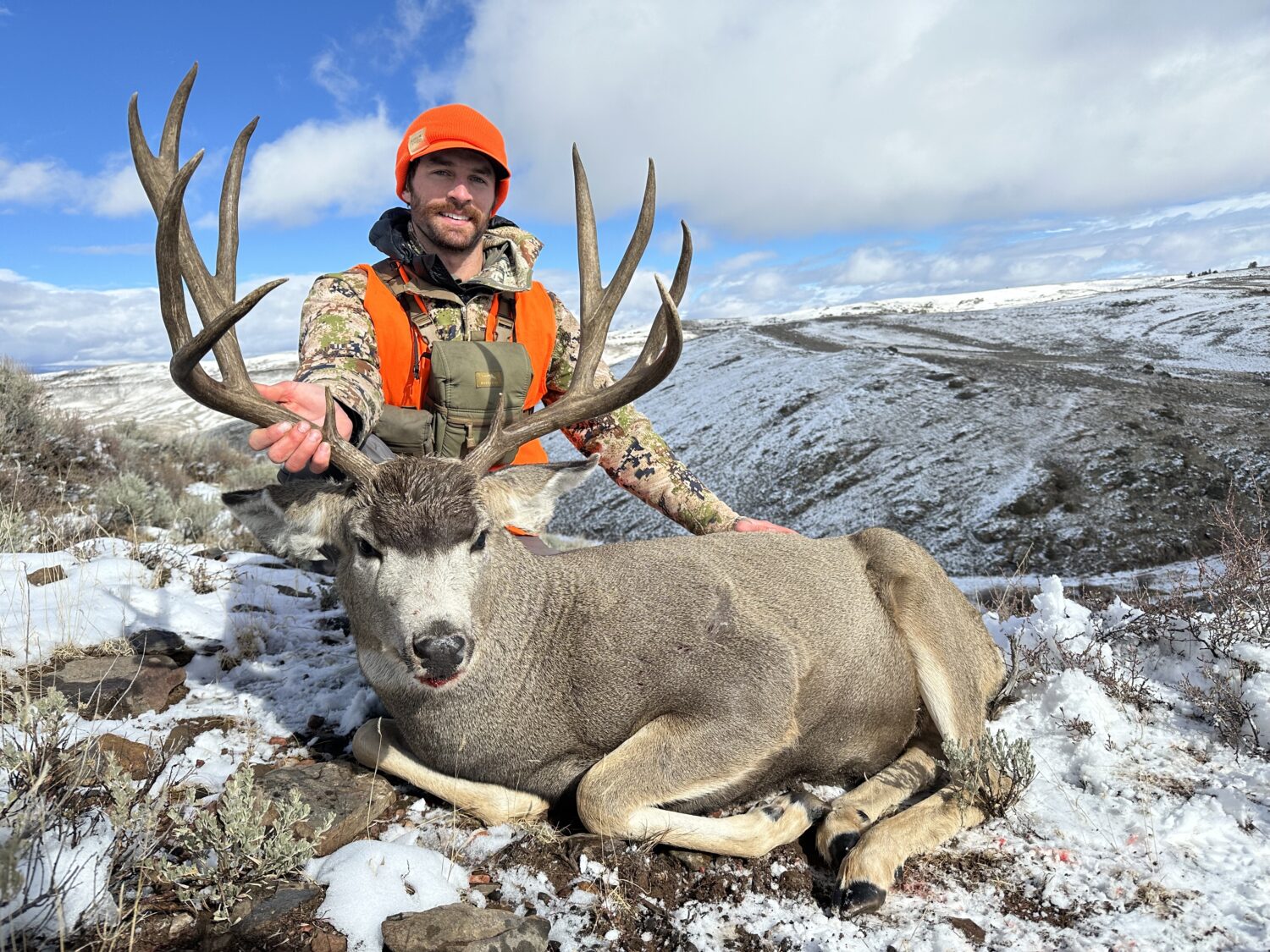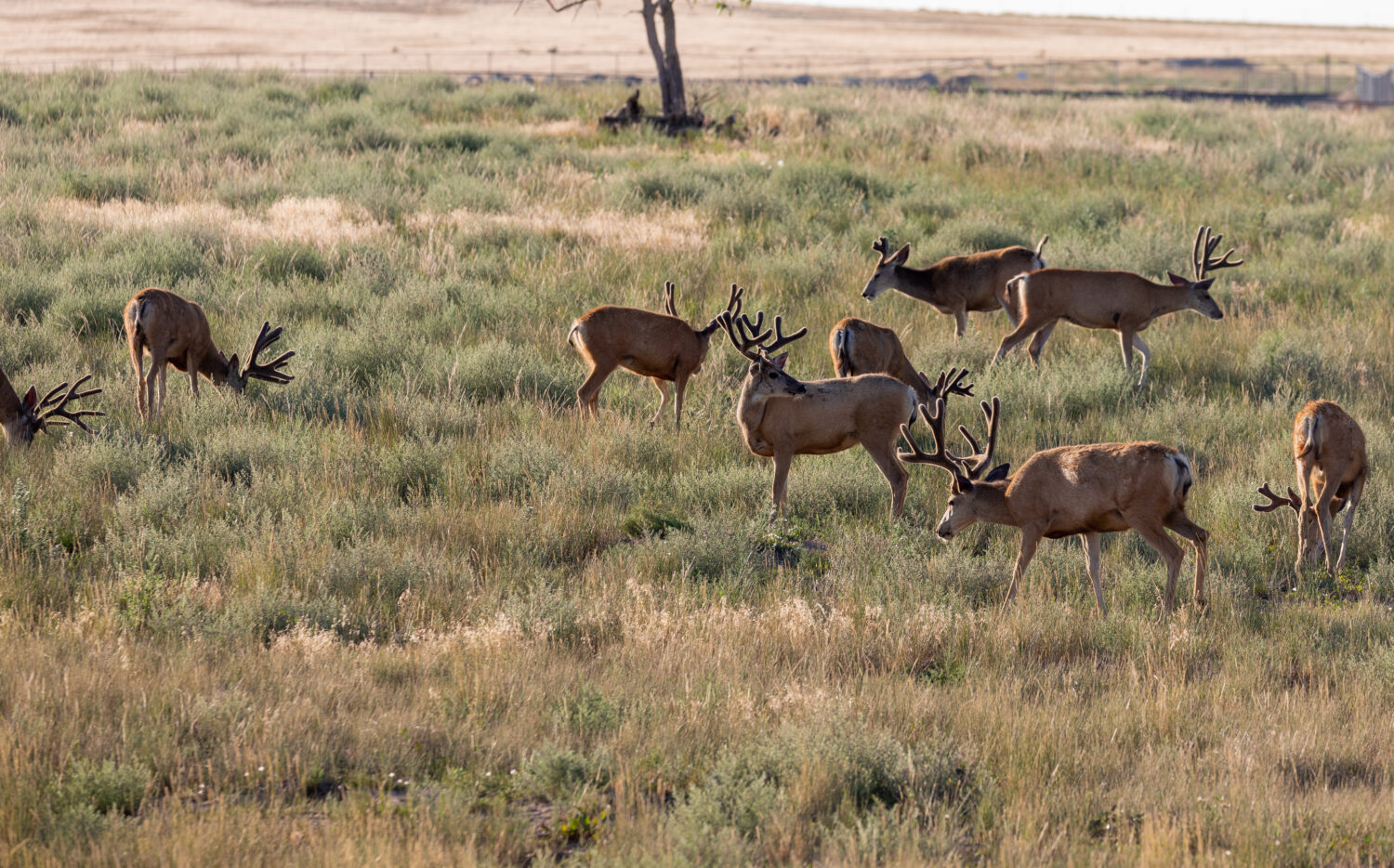December Field Notes: A Guide to Glassing More Mule Deer

In the world of Western big game hunting, mule deer represent the ultimate chess match. Locating a mature, migratory buck within a vast expanse of habitat is an exercise in patience and persistence that can span multiple seasons. Much of this pursuit is spent seated behind binoculars and spotting scopes, analyzing likely hideouts and dissecting the pockets where a buck may be lurking.
Bird’s Eye View
When possible, you should take the time to identify glassing vantages long before the hunt begins. Whether scouting in person or through digital maps, it is critical to identify elevated terrain that will offer a wide field of view into likely mule deer habitat. One should consider the aspect you will be glassing into; often having the sun to your back will be advantageous. Some digital mapping platforms offer “hill shade” tools, which show you specific areas of terrain that will be shaded or sunny based on the time of day and season. Using this can increase your efficiency and aid in identifying where you need to be at various times for maximum visibility of game.
Follow Your Their Instincts
Understanding mule deer habits and priorities for the season in which you’re hunting really helps narrow down prime glassing areas. Mule deer bucks are sensitive to danger, and as such generally bed for the day in areas where they’ll be difficult to see and challenging to stalk. Bucks tend to favor shade and will often change beds mid-morning to ensure they remain shaded. Earlier in the season, mature bucks will almost always be higher in elevation and further up-basin than does. Once the rut kicks in, these bucks will move closer to the doe groups, although they often still bed above and away from does by several hundred yards. Each of these tendencies result in habitat pockets where bucks are most likely to spend time. By using your knowledge of their needs, you can target your glassing efforts on these areas and locate deer more efficiently.

Glass with Purpose
Once you’ve settled into your glassing vantage, it’s important to be purposeful with your efforts. The wide landscapes visible from most good glassing knobs make it tempting to look around aimlessly, but doing so leaves blind-spots where a buck could go undetected. Instead, glass methodically and in linear motions to ensure you’ve thoroughly examined a hillside before moving on to the next. I find that glassing from right to left, against the norm, forces me to slow down and focus, and in turn, pick up more deer. Analyzing the field-of-view through stationary binoculars, rather than trying to simultaneously pan and glass, will also allow you to pick up the slight movements that can give away a wary buck. Glassing from a good tripod equipped with a smooth-panning head is infinitely more effective than glassing by hand. it’s a game changing piece of equipment that every mule-deer hunter should utilize.
The Right Place at the Right Time
It should go without saying that being settled in your glassing position during periods of the day with peak deer movement is vital. One should be at their glassing vantage long before sunrise during a morning session, and likewise resist the urge to leave an evening session until it’s completely dark. Midday is a good time to change glassing locations, change positioning, or re-scan areas of heavy cover to try and turn up a bedded buck that slipped by earlier in the day. During the rut, all-day sits are more common, as deer can be cruising for does at any time. Choosing a vantage from which multiple groups of does are visible will allow you to keep an eye out for rutty bucks cruising between these groups in search of a doe in heat. It can be very difficult to continue glassing for hours on end, but being outfitted with the proper clothing and optics will make it easier to remain focused.

Mastering the art of glassing for mule deer requires a combination of patience, strategic planning, and knowledge of both terrain and deer behavior. By selecting the right vantage points, understanding the deer’s seasonal patterns, and committing to methodical, purposeful glassing, hunters can significantly increase their chances of success. The key to effective glassing lies in consistency and attention to detail—slow, deliberate scans can reveal the subtle movements of a buck that might otherwise go unnoticed. With the right gear, especially quality optics, and a strong understanding of deer habits, hunters can sharpen their skills, maximize their time in the field, and ultimately improve their odds of locating that elusive, mature buck.

